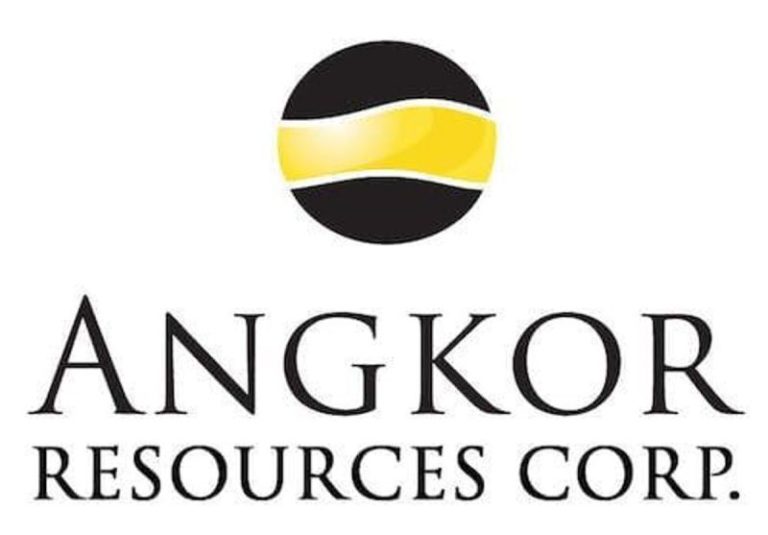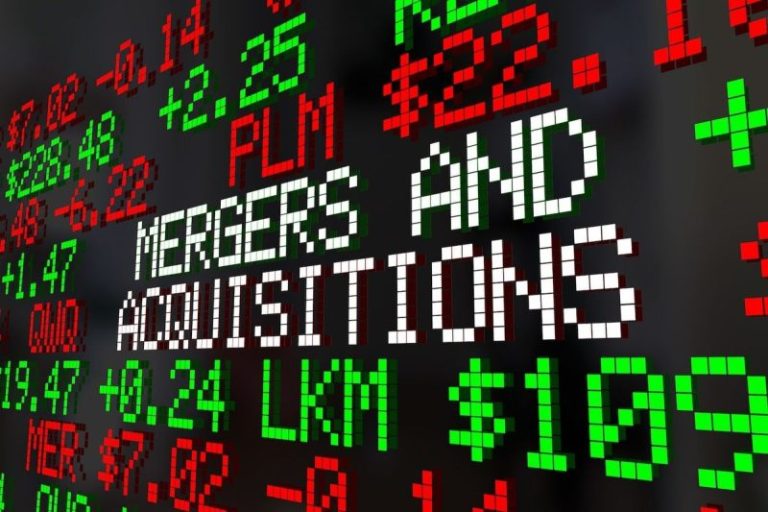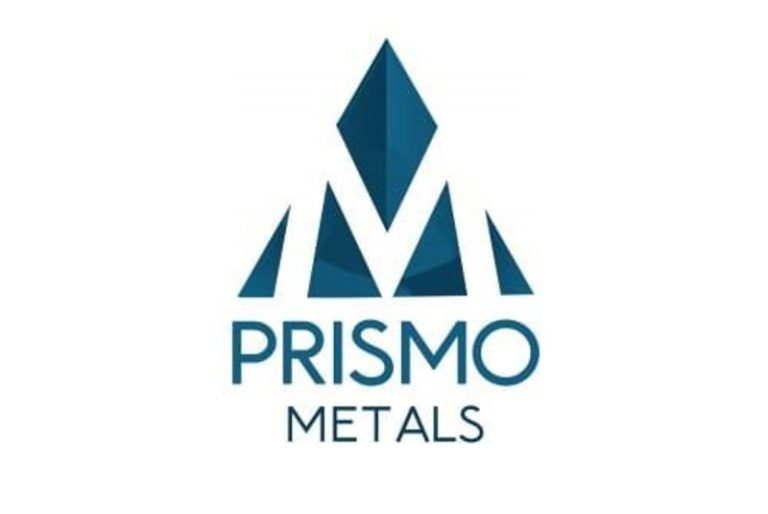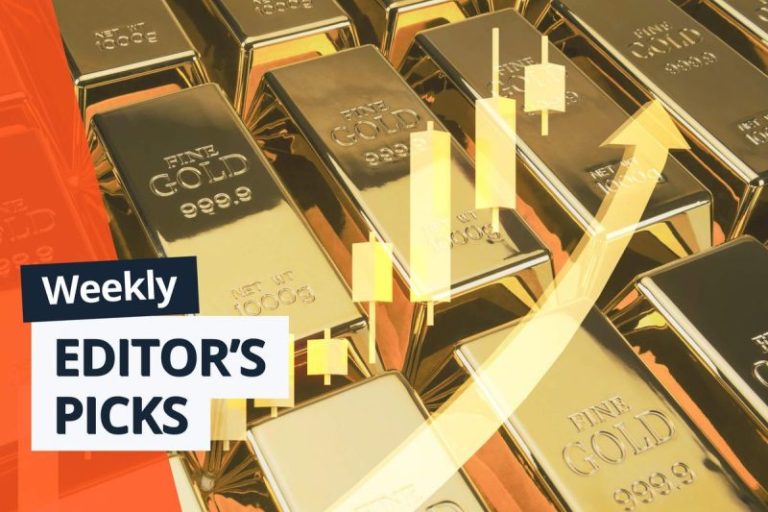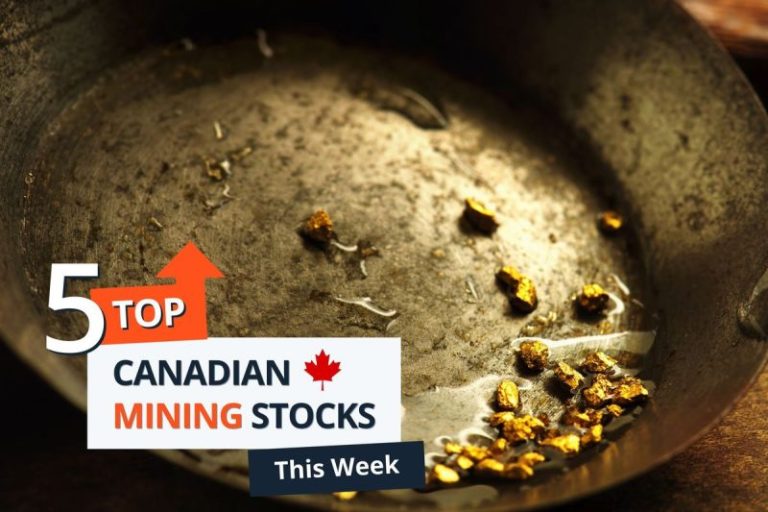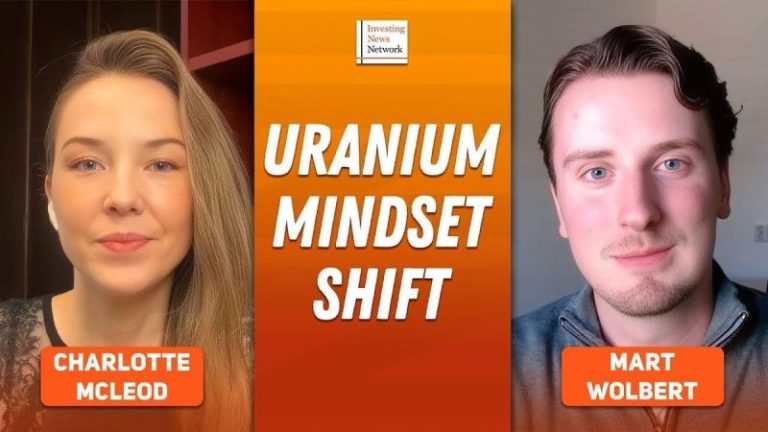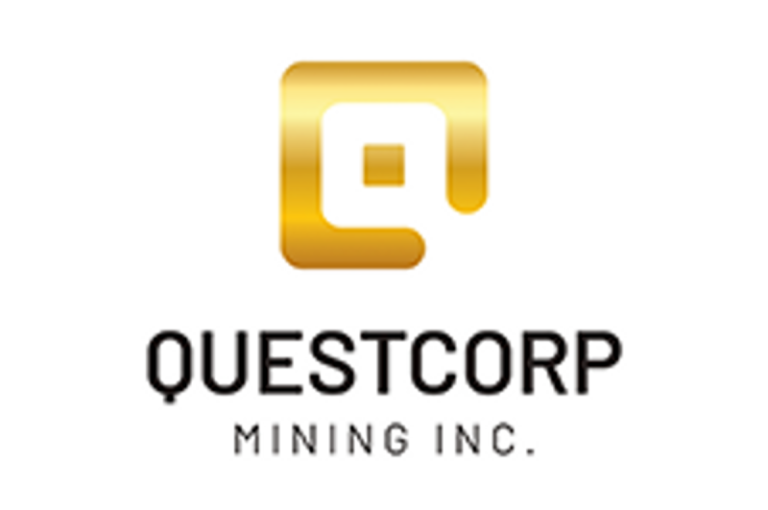On Thursday (September 11), Canadian Prime Minister Mark Carney revealed the first tranche of projects selected by the newly created Major Projects Office.
The goal of the office is to accelerate timelines for projects deemed to be in the national interest, which include infrastructure, natural resources and technology. The office is being led by Dawn Farrell, who previously served as president and CEO of TransAlta (TSX:TA) and Trans Mountain. Three of the five projects announced are well into permitting or development and the Prime Minister said that the intention was to help them with a final regulatory push or to find the financing needed to complete.
The projects include the Phase 2 expansion of LNG Canada’s Kitimat facility, which will double capacity of liquified natural gas to 28 million metric tons per annum, the development of Foran Mining’s (TSX:FOM) McIlvenna Bay copper-zinc mine in Saskatchewan, and an expansion of Newmont (TSX:NGT,NYSE:NEM,ASX:NEM) and Imperial Metals’ (TSX:III) Red Chris copper-gold mine in Northern British Columbia.
Carney also stated that a second set of projects would be announced before the CFL’s Grey Cup on November 16.
In major M&A news, mining giants Teck (TSX:TECK.B,TSX:TECK.A,NYSE:TECK) and Anglo American (LSE:AAL,OTCQX:AAUKF) announced on Monday (September 8) that they would combine in a US$70 billion “merger of equals.” If approved, the resulting company will be called Anglo Teck, and will be headquartered in Vancouver, British Columbia.
In a news release, Teck said the deal would create US$800 million in pre-tax recurring annual synergies by year four, with US$1.4 billion in pre-tax yearly earnings from optimizations at the adjacent Collahuasi and Quebrada Blanca copper mines in Chile.
Barrick Mining (TSX:ABX,NYSE:B) announced on Wednesday (September 10) that it had reached an agreement to sell its Hemlo Gold Mine in Ontario to Carcetti Capital, which will be renamed Hemlo Mining, for gross proceeds of US$1.09 billion through a combination of cash and shares.
The sale marks Barrick’s continued divestment of non-core assets following the sale of its Donlin and Alturas projects earlier in the year.
Also, this week saw the TSX release its annual TSX30 top companies list, which included 17 resource companies, 15 of which are precious-metals-focused. The top three precious metals stocks were Lundin Gold (TSX:LUG,OTCQX:LUGDF), Avino Silver & Gold (TSX:ASM) and New Gold (TSX:NGD,NYSE:NGD). The top overall company was Celestica (TSX:CLS), which focuses on AI supply chain optimizations.
In other TSX news, Newmont applied to delist its shares from the exchange on Wednesday citing low trading volumes. The company has been looking to cut overhead in recent years, and the move could lower administrative costs and improve efficiency, Reuters reports.
South of the border, the US Bureau of Labor Statistics released its consumer price index data on Thursday, which showed inflation had ticked up to 2.9 percent over the same period last year. The numbers, along with last week’s weak jobs report, will be factors for the Federal Reserve when it meets for its September meeting next week.
As of Friday afternoon, over 95 percent of analysts are expecting the central bank to make a 25 point cut to the rate, bringing it to the 4 to 4.25 percent range.
For more on what’s moving markets this week, check out our top market news.
Markets and commodities react
Canadian equity markets were mostly positive this week. The S&P/TSX Composite Index (INDEXTSI:OSPTX) set another new record high on Thursday, climbing to 29,409.74 before retreating to end the week up 0.97 percent to 29,283.82.
The S&P/TSX Venture Composite Index (INDEXTSI:JX) performed even better, climbing 3.67 percent to finish Friday at 879.67. However, the CSE Composite Index (CSE:CSECOMP) went the opposite direction, shedding 2.17 percent to end the week at 153.81.
The gold price was in focus again this week as it climbed to a new record high of US$3,667 per ounce on Tuesday, as analysts predict a rate cut by the Federal Reserve when it meets next week. Gold ended the week up 2.74 percent at US$3,642.70 per ounce.
Silver had a similarly explosive week, climbing past US$42 per ounce for the first time since 2011 and gaining 3.82 percent on the week to close Friday at US$42.16.
Copper also saw gains this week rising 2.17 percent to US$4.65 per pound. Meanwhile, the S&P Goldman Sachs Commodities Index (INDEXSP:SPGSCI) posted a slight decrease of 0.1 percent to end the week at 548.34.
Top Canadian mining stocks this week
How did mining stocks perform against this backdrop?
Take a look at this week’s five best-performing Canadian mining stocks below.
Stocks data for this article was retrieved at 4:00 p.m. EDT on Friday using TradingView’s stock screener. Only companies trading on the TSX, TSXV and CSE with market caps greater than C$10 million are included. Mineral companies within the non-energy minerals, energy minerals, process industry and producer manufacturing sectors were considered.
1. Guardian Exploration (TSXV:GX)
Weekly gain: 94.44 percent
Market cap: C$14.34 million
Share price: C$0.175
Guardian Exploration is an exploration and development company with a portfolio of oil and gas and mineral properties.
Among its properties is the Sun Dog gold project covering an area of 9,415 hectares in the Kivalliq Region in Nunavut, Canada. The site is located near the historic Cullaton Lake mine, which produced 100,000 ounces of gold between October 1981 and September 1985.
The company acquired the project on May 2 from New Break Resources (CSE:NBRK). Under the terms of the deal, Guardian received a 100 percent interest in the property, along with mineral rights and 60 drums of Jet A fuel in exchange for 5 million shares and a cash payment of C$75,000.
Guardian also reimbursed New Break C$18,830 for annual rent and granted New Break the option to buy back a 20 percent interest in the property for C$1.00.
The most recent news from the project came on Monday, when the company reported that it is commencing a one-month field program at the site that will include geological mapping, soil sampling and trenching. Guardian plans to perform follow-up exploration and drilling in 2026.
2. Sokoman Minerals (TSXV:SIC)
Weekly gain: 80 percent
Market cap: C$13.57 million
Share price: C$0.045
Sokoman Minerals is a discovery-oriented company with a portfolio of gold projects and one of the largest land positions in Newfoundland and Labrador, Canada. It also owns a 40 percent stake in the Killick lithium project, a 40/40/20 joint venture with Benton Resources (TSXV:BEX,OTC:BNTRF) and Piedmont Lithium (OTC Pink:PLLTL).
Its primary focus is on its flagship Moosehead gold project located in Central Newfoundland. The advanced project consists of 98 claims covering 2,450 hectares and hosts an orogenic Fosterville-style gold system, according to Sokoman. The company has defined seven zones with high-grade mineralization through over 130,000 meters of drilling.
Sokomon announced on Friday that it was commencing diamond drilling at the site with the focus on testing the Eastern and Western Trend gold zones for depth extensions as well as undiscovered parallel zones. The drill holes will test to a depth of 1,000 meters.
Additionally, the company reported on September 2 that it expanded its land position at its Crippleback Lake gold-copper property to 13,000 hectares and planned to mobilize for induced polarization surveys, sampling and mapping of the site immediately.
3. CopAur Minerals (TSXV:CPAU)
Weekly gain: 61.11 percent
Market cap: C$11.84 million
Share price: C$0.145
CopAur is a gold exploration and development company advancing its flagship Kinsley Mountain oxide gold project in Nevada, United States.
The project is home to a historic open pit gold mine that produced approximately 138,000 ounces between 1995 and 1999. According to the project page, the property hosts an indicated mineral resource of 418,000 ounces of gold with an average grade of 2.63 grams per metric ton (g/t) gold.
On August 7, the company announced that it was shifting its full focus to advance work at its Kinsey Mountain project.
The company’s most recent news came on Monday when it reported that it had hired Andrew Neale as its new CEO. Neale brings more than 35 years of mining experience to CopAur and has held senior positions with Freeport-McMoRan (NYSE:FCX) where he oversaw operations at its Grasberg copper-gold mine in Indonesia.
The company added that it was currently awaiting a decision from the Nevada Bureau of Land Management on a pair of permits for the Kinsey Mountain site, with one allowing it to test for reclamation at the heap leach pad and the other to allow it to restart production.
4. Silver North Resources (TSXV:SNAG)
Weekly gain: 60 percent
Market cap: C$26.72 million
Share price: C$0.40
Silver North Resources is primarily focused on advancing a portfolio of silver assets in the Yukon, Canada.
Its flagship Haldane silver project covers an area of 8,164 hectares in the Yukon’s Keno Hill Silver District and has seen silver exploration dating back to the late 1800s. The property hosts several deposits, including the Main Fault and the West Fault targets, which have produced high-grade silver assays up to 3,267 g/t over 1.26 meters at the West Fault and both zones hosting additional amounts of gold, lead, and zinc.
The company announced on August 15 that it commenced a 10 hole drill program at Haldane to follow up on the discovery of the Main Fault zone in 2024.
Additionally, the company announced on August 20 that it had begun its initial exploration program at the Veronica property at its GDR project in the Yukon. The program is eligible for partial funding up to C$30,000 as part of the Yukon Mineral Exploration Program.
5. Blue Star Gold (TSXV:BAU)
Weekly gain: 53.12 percent
Market cap: C$25.67 million
Share price: C$0.245
Blue Star Gold is a gold exploration and development company operating in Nunavut, Canada.
Its flagship asset is the Ulu gold project, which includes the Ulu mining lease and the Hood River property, together forming a 12,000 hectare land package. The property features a renewable 21 year mining lease for the advanced-stage Flood Zone deposit.
As per a February 2023 updated mineral resource estimate (MRE), Ulu holds a measured and indicated resource of 572,000 ounces of gold from 2.54 million metric tons of ore at an average grade of 7.02 g/t gold, along with an additional inferred resource of 303,000 ounces of gold from 1.28 million metric tons of ore at 7.34 g/t.
Blue Star also owns the Roma gold project, located on 11,532 hectares of crown mineral claims and 4,119 hectares of mineral exploration agreements in Nunavut’s High Lake greenstone belt.
On Wednesday, Blue Star reported results from surface samples at its Auma prospect at Roma. The company said it had collected a total of 133 samples, with 44 returning gold grades above 1 g/t, including two samples with grades of 151 g/t and 125 g/t gold. The sampling program extended Zone 3, which is untested by drilling, by an additional 35 meters for a strike length of 130 meters.
Additionally, Blue Star also found high values of copper in quartz veining, with one sample producing a grade of 7.64 g/t gold and 4.2 percent copper.
FAQs for Canadian mining stocks
What is the difference between the TSX and TSXV?
The TSX, or Toronto Stock Exchange, is used by senior companies with larger market caps, and the TSXV, or TSX Venture Exchange, is used by smaller-cap companies. Companies listed on the TSXV can graduate to the senior exchange.
How many mining companies are listed on the TSX and TSXV?
As of May 2025, there were 1,565 companies listed on the TSXV, 910 of which were mining companies. Comparatively, the TSX was home to 1,899 companies, with 181 of those being mining companies.
Together, the TSX and TSXV host around 40 percent of the world’s public mining companies.
How much does it cost to list on the TSXV?
There are a variety of different fees that companies must pay to list on the TSXV, and according to the exchange, they can vary based on the transaction’s nature and complexity. The listing fee alone will most likely cost between C$10,000 to C$70,000. Accounting and auditing fees could rack up between C$25,000 and C$100,000, while legal fees are expected to be over C$75,000 and an underwriters’ commission may hit up to 12 percent.
The exchange lists a handful of other fees and expenses companies can expect, including but not limited to security commission and transfer agency fees, investor relations costs and director and officer liability insurance.
These are all just for the initial listing, of course. There are ongoing expenses once companies are trading, such as sustaining fees and additional listing fees, plus the costs associated with filing regular reports.
How do you trade on the TSXV?
Investors can trade on the TSXV the way they would trade stocks on any exchange. This means they can use a stock broker or an individual investment account to buy and sell shares of TSXV-listed companies during the exchange’s trading hours.
Top 5 Canadian Mining Stocks This Week: Kirkland Lake Discovery Gains 88 Percent
Top 5 Canadian Mining Stocks This Week: Kirkland Lake Discovery Gains 88 PercentTop 5 Canadian Mining Stocks This Week: San Lorenzo Gold Shines with 329 Percent Gain
Article by Dean Belder; FAQs by Lauren Kelly.
Securities Disclosure: I, Dean Belder, hold no direct investment interest in any company mentioned in this article.
Securities Disclosure: I, Lauren Kelly, hold no direct investment interest in any company mentioned in this article.
This post appeared first on investingnews.com

